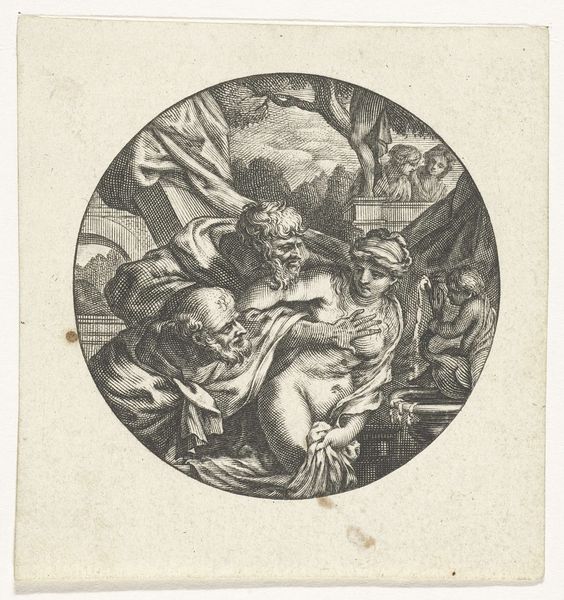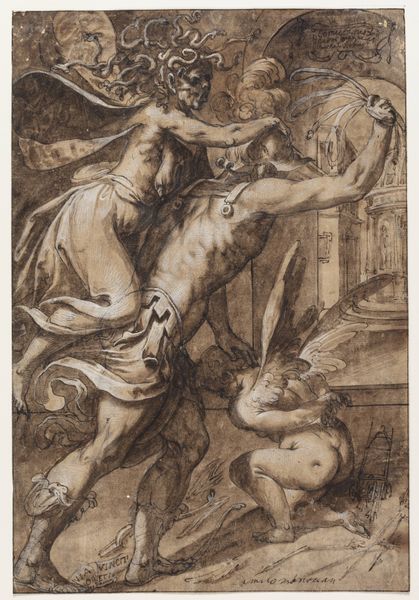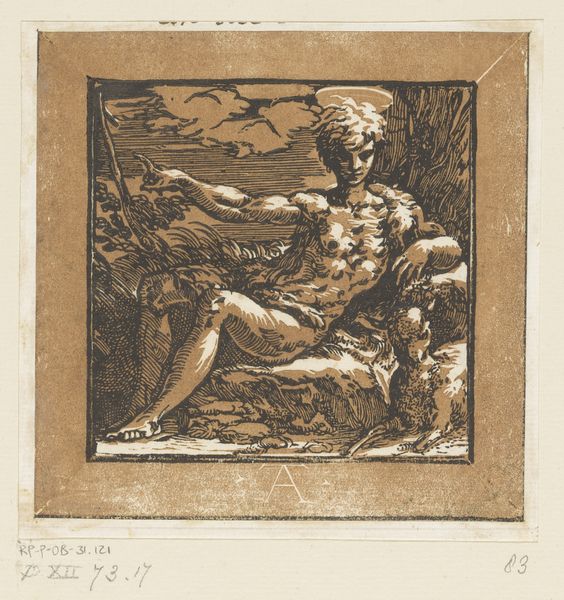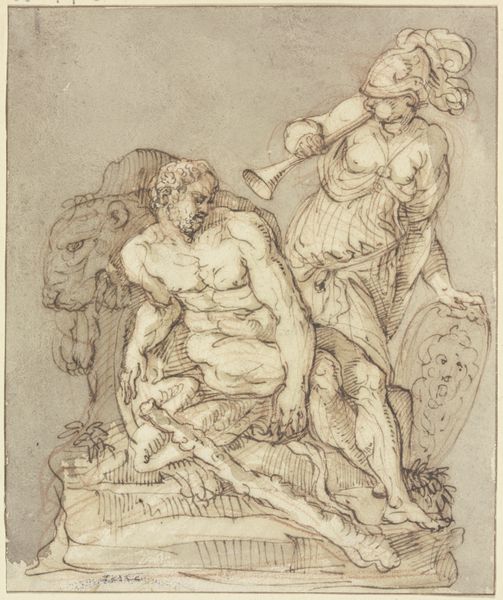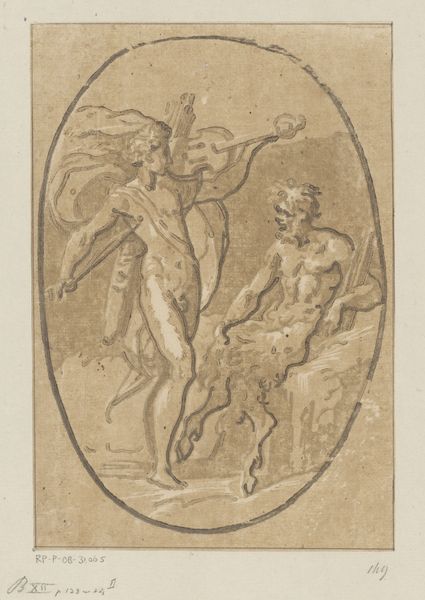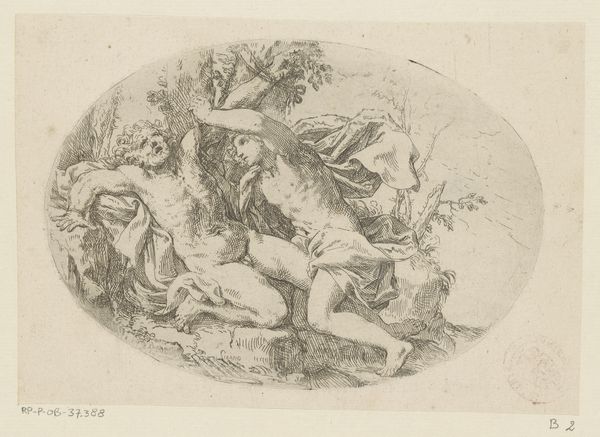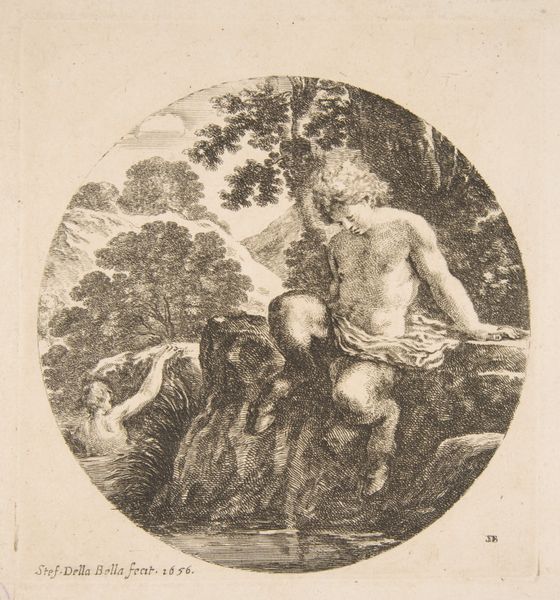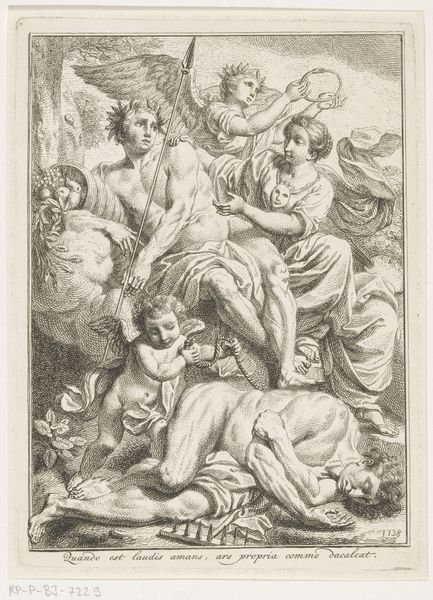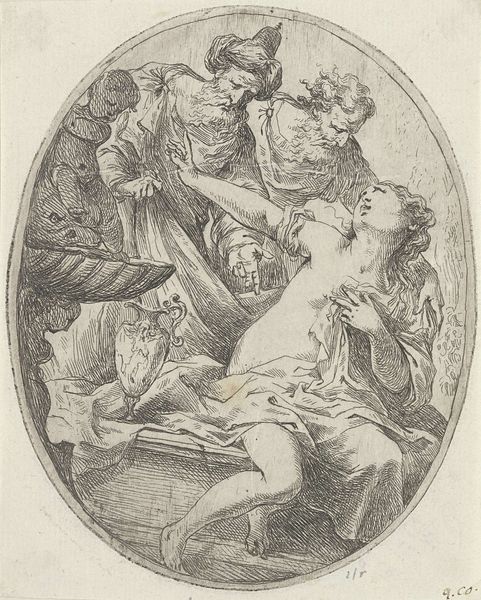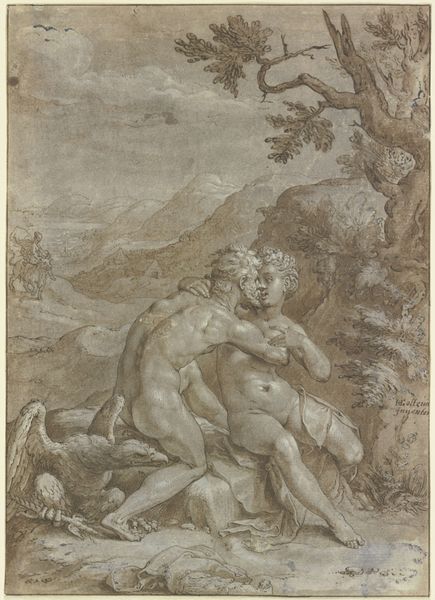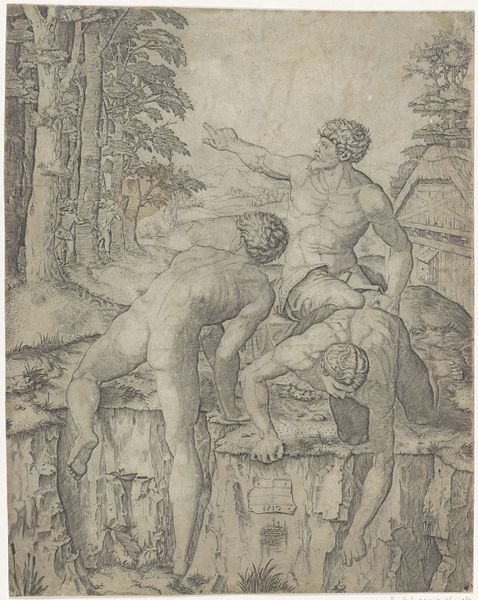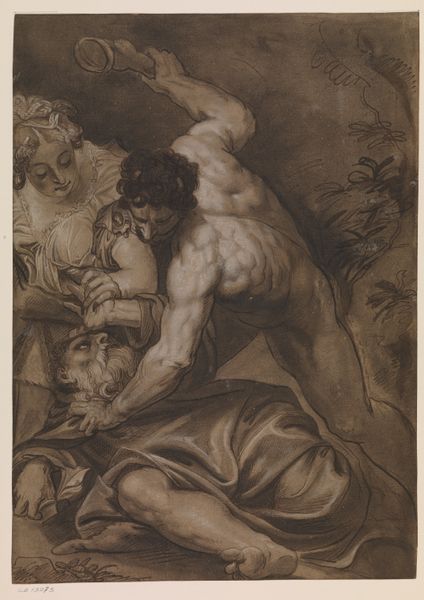
drawing, ink
#
drawing
#
allegory
#
baroque
#
figuration
#
ink
#
history-painting
#
nude
Dimensions: overall: 31.2 x 30.1 cm (12 5/16 x 11 7/8 in.)
Copyright: National Gallery of Art: CC0 1.0
Curator: Here we have "Acis and Galatea," a drawing made around 1590 by Abraham Bloemaert. Editor: The sepia ink gives it such a warm, enveloping feeling. I'm immediately drawn to the intertwined figures in the foreground. There's a real tension created by the strong contours and the dynamic poses. Curator: Indeed. The baroque style is evident not only in the swirling lines but also in its origins within a complex artistic and social landscape. Bloemaert and his contemporaries grappled with representing classical mythology in a period of religious and political strife. Allegories such as this one, taken from Ovid's "Metamorphoses," would serve as cultural commentary in its time. Editor: What I find so interesting is how Bloemaert uses light and shadow to sculpt the figures. Look at the musculature of Acis – there's a palpable sense of weight and volume despite the limitations of a drawing. Curator: This drawing exemplifies how artists in the late 16th century adopted and repurposed classical narratives. Depicting nude figures—wasn't just about skill, it was about reclaiming a heritage, a direct line back to classical values during a turbulent era. The positioning of such drawings was very deliberate. Think about where it might have been seen in an academy, a collector's cabinet. Editor: I’m captivated by Galatea's gesture, directing our gaze toward the faint, mountainous landscape behind them. That single point introduces a narrative element and visual depth beyond the initial impression of these central figures. Curator: This tale was revisited so often because it allowed for nuanced engagement with humanist themes: desire, loss, transformation. Think of it not just as a single artwork but as a part of a wider dialogue within the artist's studio. The patrons had very particular values they wished to assert. Editor: It makes you appreciate how Bloemaert transformed a relatively simple medium like ink into something so evocative, managing to imply an entire emotional world within these subtle shades and lines. Curator: Considering this piece reminds us of the powerful interplay between art, society, and classical thought during a transformative period in European history. Editor: It definitely leaves me appreciating the nuances of light, line, and composition that shape our understanding and emotional experience.
Comments
No comments
Be the first to comment and join the conversation on the ultimate creative platform.
